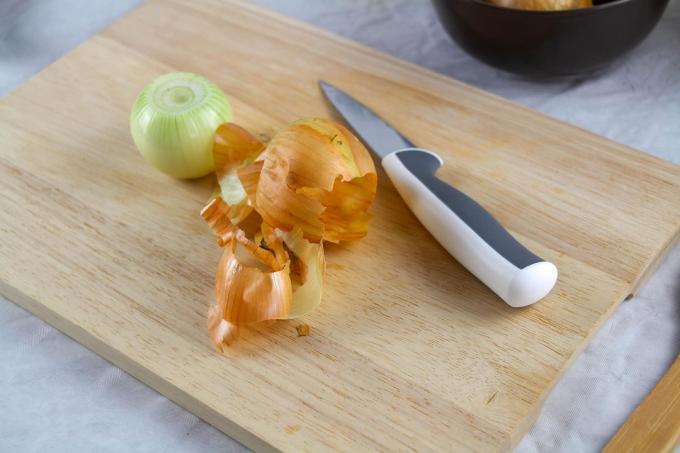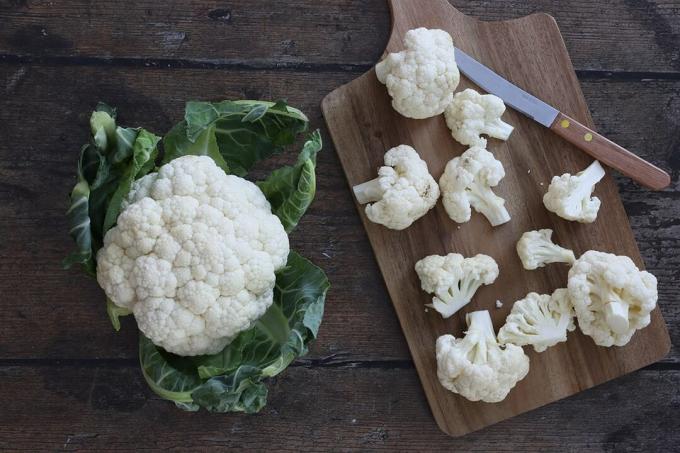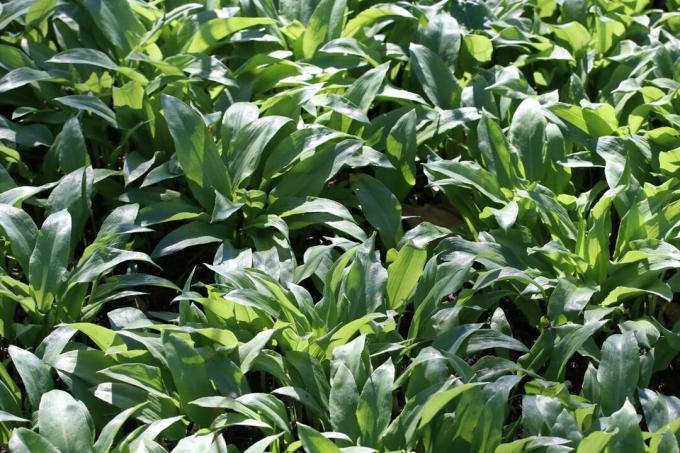

Table of contents
- The reason for the tears
- Flowing water
- Rinse with water
- The right knife
- ventilation
- use tools
- Use safety goggles
- breathing technique
- use cold
- frequently asked Questions
Cutting onions is a chore because the hot juice stings your eyes so much that tears come after a short time. This article explains how to avoid this.
The reason for the tears
It's well known that slicing onions causes tears, but not the reason why. Onions protect themselves from being eaten by animals with certain ingredients. These substances are released when the plant cells are injured, for example by a bite, but also by a cut. When exposed to air, the plant compounds react with each other and form an irritating gas, which in turn leads to watery eyes.

Flowing water
Since the ingredients in the onion only work in air, the easiest way to avoid tears is to cut the onions under water or under running water. A bowl of water saves water more than running water. However, it's not that easy to cut an onion in water, which is why this option is not always practical. However, it is enough to peel an onion without tears and break it into larger pieces.
Rinse with water
It is easier if the onion, the knife and the cutting mat are regularly rinsed with water. A few tears can still occur, but significantly less than when working without water.
The right knife
The sharper the knife, the faster the work goes and the less the plant cells are injured when cutting. As a result, less of the irritating substances are released.

ventilation
When the air is in motion, the enzymes and the gases that form from them cannot collect near the eyes and lead to tears. The following options are therefore suitable:
- work at the open window
- Turn on the extractor hood in the kitchen at the highest level and work underneath it
- use a fan
use tools
There are several ways to chop onions without having to use a knife. Vegetable cutters with a closed housing prevent the onion substances from evaporating. The onion only has to be peeled by hand and halved or quartered. Then it is placed in the onion cutter, the flap is closed and the blades are operated by crank, cable or electrically, depending on the model.
A notice:
A disadvantage of the vegetable cutter is the increased cleaning effort. However, larger quantities of onions can be cut much faster with it.
Use safety goggles
Safety goggles can be used to prevent the onion enzymes from reaching your eyes in the first place. However, this must enclose the eyes in an airtight manner, such as diving goggles do.
breathing technique
The right breathing technique protects the mucous membranes of the nose from the pungent vapors of the onion and thus leads to fewer tears. It is important to always breathe through your mouth.

Tip:
If you find this difficult, you can use a clothespin on your nose to help.
use cold
While onions should not be refrigerated for storage, cook them an hour before cooking However, keeping the slices cool helps prevent the enzymes in the onion from reacting as quickly can. It is best to put knives and cutting boards in the fridge as well.
frequently asked Questions
All types of onions that contain the irritating substances cause tears when cut. However, since onions differ in their sharpness, they also contain different amounts of the responsible ingredients. The less hot the onion is, the fewer tears it causes.
onions, the stored for a long time are losing some of their ingredients, including the harsh enzymes responsible for tears. This means that onions that have been stored for a long time are easier to cut. However, they are no longer as hot and aromatic.
In fact, both methods can help some people but not others. The only way to find out if it works is to try it.
 Maike
Maike
Learn more about harvesting & storing vegetables

When are cucumbers ripe? | Harvest time info
It is the (delicious) must for every vegetable garden: the cucumber! If the location and care are right, the fruits ripen at breathtaking speed. Therefore, every gardener must be careful not to miss the optimal harvest time. But when exactly are the different cucumbers ripe?

Harvesting and storing cucumbers correctly: instructions
Cucumbers are a popular and refreshing summer vegetable that is particularly common in the home garden. But what should be considered when harvesting outdoor and salad cucumbers? We will show you how to properly harvest cucumbers.

Store cauliflower properly - 6 tips for storage
Cauliflower is one of the most popular foods due to its fine taste and healthy ingredients. Because it's not a typical stored vegetable, proper storage is essential to preserve nutrients and flavor.

The ideal harvest time for wild garlic: all information
In spring it's that time again: The popular wild garlic can finally be harvested. Read here when the best harvest time is and how you can best harvest wild garlic!

Storing carrots | 7 tips for overwintering carrots
Fresh vegetables from your own garden is generally something wonderful. Carrots shouldn't be missing either. They cannot be compared to those from the supermarket. There are early, mid-early and late-ripening varieties and not all are suitable for storage.

Storing Ginger | 7 tips to make the ginger root last longer
Ginger is becoming increasingly popular in our homes as a kitchen spice and natural remedy. The spicy rhizomes can be bought fresh almost everywhere. But so that all valuable ingredients are preserved, it is important to store them correctly after purchase.
